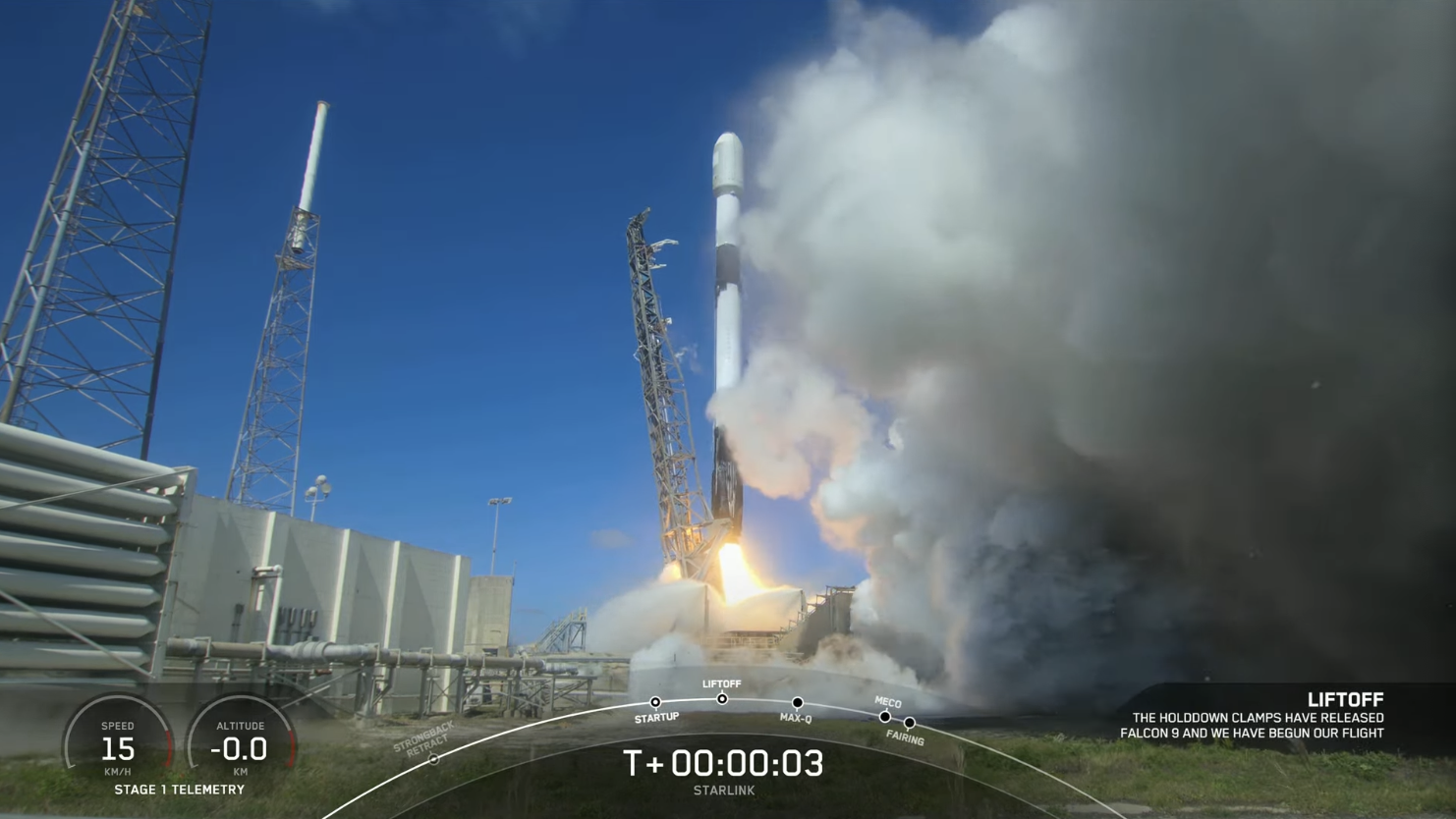
SpaceX has successfully executed its 20th mission of the year, even before 2023’s first quarter is out, raising the realistic prospect that the Hawthorne, Calif.-based launch services provider might achieve as many as 80 flights before the New Year’s Eve bell next tolls. A ten-times-flown Falcon 9 core roared aloft from storied Space Launch Complex (SLC)-40 at Cape Canaveral Space Force Station, Fla., at 11:43 a.m. EDT Friday, laden with the year’s tenth batch of Starlink low-orbiting internet communications satellites.

Twenty missions inside the year’s 17th week is a remarkable achievement. Even 2022’s all-time personal best of one Falcon Heavy and 60 Falcon 9 launches required until mid-May to hit 20 flights, whilst 2021 did not reach that number until the end of June. And SpaceX did not even surpass 20 missions in an entire calendar year until as recently as 2018.
On average, since the dawn of 2023 SpaceX has flown a mission every 4.15 days, a significant uptick over last year’s 5.98 days. Fifteen rockets—including a Falcon Heavy core and pair of side-boosters—have supported those 20 missions, seven of which have now launched twice apiece, and in January and March the organization tied its own record of seven flights within a single calendar month.

Two brand-new Falcon 9 cores have entered SpaceX’s burgeoning fleet so far this spring and only last week the organization established a record of only four hours and 12 minutes between a pair of launches from the West and East Coasts of the United States. A rough, back-of-the-envelope forward extrapolation does not make it unreasonable to expect as many as 80 flights by year’s end, a full 25 percent uplift over 2022’s accomplishment.
Flying Friday’s mission was B1067, which became the seventh booster core in under two years to log a tenth mission. This particular bird entered SpaceX’s Falcon 9 fleet in June 2021, when she lofted the CRS-22 Cargo Dragon for its month-long voyage to the International Space Station (ISS).

She went on to deliver eight astronauts from the United States, Germany and Italy to the station as part of the Crew-3 and Crew-4 missions in November 2021 and last April, followed by the CRS-25 Cargo Dragon last summer. Added to that list, she lifted a geostationary communications satellite for Turkey, plus over 160 Starlinks, a pair of O3b mPOWER broadband satellites and the Hotbird 13G communications satellite.
In an increasingly rare move, save for brand-new boosters, SpaceX performed a Static Fire Test of B1067’s nine Merlin 1D+ engines on Thursday, ahead of Friday’s opening launch attempt. No details were given as to the necessity of the test, although it may be associated with B1067’s status as one of the most-flown members of SpaceX’s fleet.

Three T-0 points existed on Friday: a first at 11:33 a.m. EDT, a second at 1:14 p.m. EDT and a third at 2:55 p.m. EDT. Another trio of opportunities existing for Saturday’s backup opportunity, at 11:08 a.m. EDT, 12:49 p.m. EDT and 2:30 p.m. EDT.
Weather conditions for Friday’s initial launch attempt were predicted to be around 95-percent favorable, with a slight deterioration to 85 percent in the event of a 24-hour slip to Saturday. “High pressure stretching into Central Florida dominates through Friday,” noted the 45th Weather Squadron in its L-1 forecast, updated Thursday, “bringing favorable weather with near-zero concerns for the primary launch day.

“On Saturday, a shallow cold front weakens as it moves into North Florida,” it was added. “Increased moisture ahead of the front, along with an afternoon sea-breeze and southwest steering flow, brings taller cumulus clouds developing by the end of the window, with a few showers possible after the window.”
B1067’s tenth mission rose smoothly from SLC-40 at 11:33 a.m. EDT Friday, marking this pad’s third launch of March. Two-and-a-half minutes later, the core stage separated from the Falcon 9 and returned smoothly to an on-point touchdown on the expansive deck of the Autonomous Spaceport Drone Ship (ASDS), “A Shortfall of Gravitas”, situated about 410 miles (660 kilometers) offshore in the Atlantic Ocean.

With B1067 gone, the second stage’s Merlin 1D+ Vacuum engine executed a standard six-minute “burn” to deliver the Starlink payload into low-Earth orbit. Deployment of the 56 satellites—totaling some 38,400 pounds (17,400 kilograms) —was confirmed a little more than an hour into the mission.
In ten Starlink launches since January, SpaceX has now placed 496 of these low-orbiting internet communications satellites into orbit. All told, 4,159 “production-design” Starlinks have flown on 77 dedicated flights since May 2019.
Starlink now facilitates high-speed and low-latency internet provision across 51 sovereign nations and international markets, spanning North and South America, Europe, Asia, Oceania and Africa. Last month alone, Iceland, Rwanda and the Philippines—Starlink’s first client in South East Asia—officially signed up to the network, with Haiti having most recently joined in March.






3 Comments
3 Pings & Trackbacks
Pingback:SpaceX launches the seventh Falcon on March 9, looking ahead to the 80th year of the mission
Pingback:As Starship Realigns for NET Wednesday, Falcon 9, Falcon Heavy Prepare for Upcoming Missions - AmericaSpace
Pingback:SpaceX Flies Year’s 60th Falcon 9 Mission, Looks Back on Record-Setting 2023 - AmericaSpace